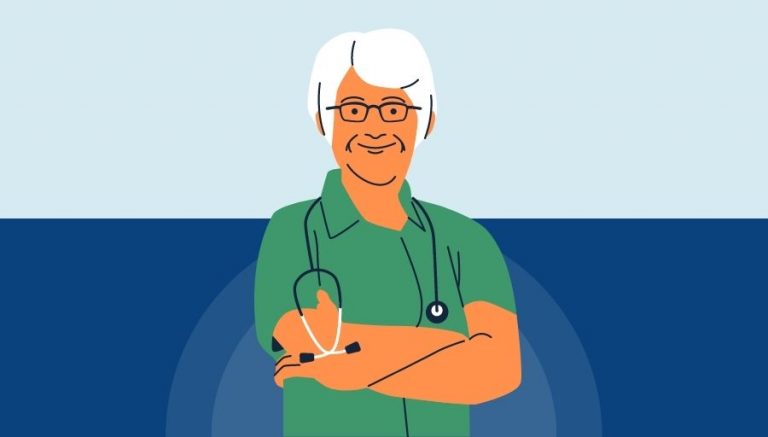How To Use CPT Code 32400
CPT 32400 describes the percutaneous needle biopsy of the pleura, which involves the removal of tissue samples from the serous membrane lining the thorax and enveloping the lungs. This article will cover the description, procedure, qualifying circumstances, appropriate usage, documentation requirements, billing guidelines, historical information and billing examples.
1. What is CPT Code 32400?
CPT 32400 is used to describe the percutaneous needle biopsy of the pleura. This procedure involves the insertion of a hollow needle through the skin into the chest to collect core tissue samples from the serous membrane that lines the thorax and walls of the pulmonary cavity. The tissue samples are then sent for pathological analysis to aid in diagnosis and treatment planning.
2. Official Description
The official description of CPT code 32400 is: ‘Biopsy, pleura, percutaneous needle.’ If imaging guidance is performed during the procedure, additional codes such as 76942, 77002, 77012, or 77021 should be reported. For fine needle aspiration biopsy, different codes such as 10004, 10005, 10006, 10007, 10008, 10009, 10010, 10011, 10012, or 10021 should be used.
3. Procedure
- The patient is appropriately prepped and anesthetized for the procedure.
- The healthcare provider uses imaging guidance, such as computed tomography scan, ultrasound, or fluoroscopy, to insert a hollow needle through the skin into the chest.
- The provider rotates the needle to collect core tissue samples from the pleura.
- Multiple biopsy samples are typically taken.
- The provider removes the needle and bandages the site after collecting the samples.
4. Qualifying circumstances
CPT 32400 is performed when there is a need to obtain tissue samples from the pleura for pathological analysis. The procedure is typically done to aid in the diagnosis of various conditions affecting the pleura, such as pleural effusion, pleural thickening, or pleural tumors. The patient must be appropriately prepped and anesthetized, and the procedure must be performed by a qualified healthcare provider.
5. When to use CPT code 32400
CPT code 32400 should be used when a percutaneous needle biopsy of the pleura is performed to obtain tissue samples for pathological analysis. It is important to note that this code should not be reported if imaging guidance is used during the procedure, as additional codes should be used in that case. It is also important to use separate codes for fine needle aspiration biopsy.
6. Documentation requirements
To support a claim for CPT 32400, the healthcare provider must document the following information:
- Indication for the procedure and the need for tissue samples from the pleura
- Details of any imaging guidance used during the procedure
- Date and time of the procedure
- Number of biopsy samples taken
- Pathological analysis requested for the tissue samples
- Signature of the healthcare provider performing the procedure
7. Billing guidelines
When billing for CPT 32400, ensure that the procedure meets the criteria for this code. If imaging guidance is used during the procedure, additional codes should be reported. It is important to follow the specific guidelines provided by the payer to ensure accurate and appropriate billing. It is also important to use separate codes for fine needle aspiration biopsy.
8. Historical information
CPT 32400 was added to the Current Procedural Terminology system on January 1, 1990. The code was later changed on January 1, 2016 to specify ‘percutaneous needle’ in the description.
9. Examples
- A patient with pleural effusion undergoes a percutaneous needle biopsy of the pleura to obtain tissue samples for pathological analysis.
- A healthcare provider performs a percutaneous needle biopsy of the pleura on a patient with suspected pleural thickening to aid in diagnosis.
- A patient with a suspected pleural tumor undergoes a percutaneous needle biopsy of the pleura to obtain tissue samples for further evaluation.
- A healthcare provider performs a percutaneous needle biopsy of the pleura on a patient with undiagnosed pleural abnormalities to aid in diagnosis and treatment planning.
- A patient with recurrent pleural effusion undergoes a percutaneous needle biopsy of the pleura to investigate the underlying cause.
- A healthcare provider performs a percutaneous needle biopsy of the pleura on a patient with unexplained pleural symptoms to aid in diagnosis and management.
- A patient with a history of asbestos exposure undergoes a percutaneous needle biopsy of the pleura to assess for pleural abnormalities.
- A healthcare provider performs a percutaneous needle biopsy of the pleura on a patient with suspected pleural infection to aid in diagnosis and treatment planning.
- A patient with unexplained pleural thickening undergoes a percutaneous needle biopsy of the pleura to investigate potential underlying causes.
- A healthcare provider performs a percutaneous needle biopsy of the pleura on a patient with suspected pleural metastasis to aid in diagnosis and treatment planning.





